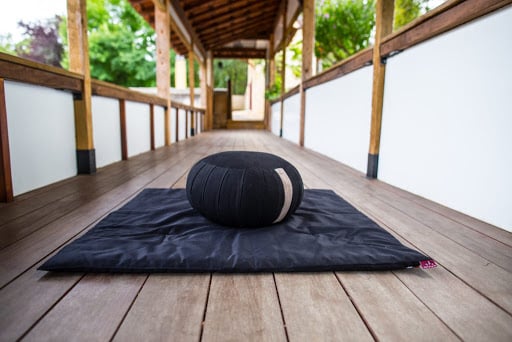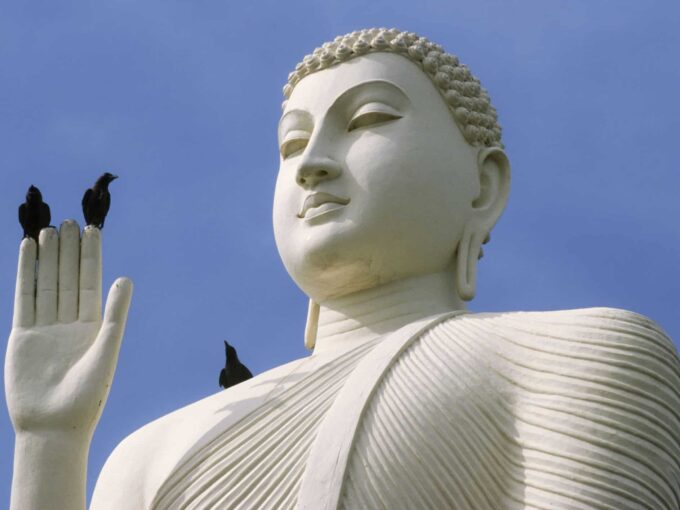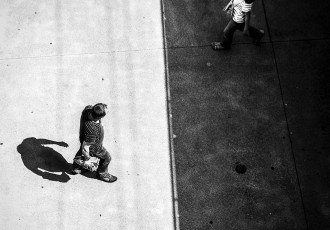Zazen is a Japanese term. “Za” literally means to sit or sitting; “zen” means to meditate or concentrate. Zazen literally means sitting meditation.
Shikantaza is a Japanese translation of a Chinese term for zazen. The term shikantaza is attributed to Dogen’s teacher Tiantong Rujing (1162-1228), and it literally means, “nothing but (shikan) precisely (da) sitting (za).” Later, Dogen compiled a manual (Fukanzazengi) that explains how to do sitting meditation. Fukanzazengi translates as “Universal Recommendation for Sitting Practice“. You can find the whole text here: Fukanzazengi.
Shikantaza is often termed a goalless meditation in quiet awareness. It is an alert condition, performed erect, with no trace of sluggishness or drowsiness. Shikantaza is not sitting with nothing to do; it is a very demanding practice, requiring diligence as well as alertness. Zazen is considered to be a Buddhist practice to settle the mind in its original state, a direct reflection and perception of the reality of life.
Zazen is the central practice in Zen.
Zen is Zazen.
Important points to always have in mind while practicing zazen
1 – The posture of the body
Is very important how you sit. You must sit on the front edge of a zafu (round meditation cushion). Cross the legs in the lotus or the half-lotus position. It is necessary to push the floor firmly with the knees. The pelvis must be tilted forward at the level of the fifth lumbar vertebra. The knees and buttocks form a tripod of support for the upper body. The backbone has to be well erected, the chin pulled back and the neck stretched out, the nose in the same vertical line with the navel, the ears in the same horizontal line with the shoulders. You have to push the floor with your knees, and the sky with the top of the head. The tip of the tongue touches the palate, the mouth has the lips and teeth closed.
The bodily posture should be balanced, grounded, and open. A stable and open bodily posture is a manifestation of a stable and open mental posture. When your posture is aligned correctly in this way, the upper part of the body should feel almost weightless, and the lower part extremely grounded and settled.
There are a few different positions used in zazen: The full lotus, or half lotus are optimal for this posture. The Full Lotus Position (Kekkafuza), is the most stable of all positions. It is done by placing each foot onto the opposite thigh. The Half Lotus Position (Hankafuza), is done by placing the foot on the opposite thigh with the sole pointing upwards, while the other rests on the floor. Is possible to experience some discomfort after holding the posture for a while. As you continue to practice, the body will settle into the posture, ligaments will become more flexible, tension will release, and the posture will become (more or less) comfortable.
If neither the full nor half-lotus postures are suitable for you, you can simply take the “Burmese” posture. This is the simplest position in which the legs are crossed with both knees resting flat on the floor. One ankle is in front of the other, not over.
If this is not suitable, you can sit in seiza (a formal kneeling posture) on the zafu.
If you have severe back or knee problems, you may use a chair or stool; in this case, sit with the feet flat on the ground.
The sitting position that works best for you will depend in part on your flexibility. Stretching prior to each sitting will help alleviate tightness and discomfort. As your meditation practice evolves, the pain you may experience will become less of an issue. Though there may be some discomfort as the limbs stretch in unfamiliar ways, gradually the body adjusts.
2 – The posture of the hands
Hands lie on your feet, their edges in contact with the abdomen, below the navel. Shoulders are relaxed. Fold your hands in the cosmic mudra. This is done by placing your right hand faced palm up, then placing your left hand, also faced palm up, over the right hand. The thumbs are lightly touching, forming a horizontal line. This is the hokkai-join, or dharmadhatu-mudra which means the “gesture of reality”. The thumbs position is also very important. If you find yourself pressing the thumbs together, then you are too stressed and need to relax. If they fall, you are falling asleep.
3 – The posture of the eyes
Keep your eyes open, half closed. Fix your sight roughly one meter on the floor, without focusing on anything in particular. Do not close the eyes (you will become dull and sleepy).
4 – Breathing
Air is expelled slowly and silently through the nose, while the push created by the exhaling goes down into the lower abdomen. At the end of the exhalation, inhalation takes place naturally. The breath comes and goes. Don’t try to manufacture deep, calm breaths. Just breathe as you breathe. If the breath is short, the breath is short. If the breath is long, the breath is long. Don’t arrange the breath. Just breathe the breath.
5 – The state of mind
During zazen, let the images, the thoughts, or the mental shapes appearing from the unconscious, pass like clouds in the sky, without fighting them, without grasping them. Like the reflexions in a mirror, the expressions of the unconscious pass, and then vanish.
When you become lost in thinking, sleeping, hearing, seeing, itching, or anything at all, just notice that, and bring yourself back to present experience.
6 – Cushions and Pads
In sitting zazen, you will need a cushion (zafu) and a pad (zabuton). The pad is about 80/80 cm, stuffed with cotton or synthetic batting. The zafu is stuffed kapok, or cotton, or synthetic batting, and is about 15-20 cm in height, and 30 cm in diameter.
7 – Problems during zazen
Pain at legs
Actually, the pain at the knees won’t last as long as you think the first times you experience it. You can overcome it by your strong will, by doing some kind of physical exercises or massage, and with the use of continuous patience.
Other pains
You can have pains in different parts of the body, and they are due to previous illnesses or bad position of the vertebrae, blocked energy flow, etc., or simply because the body is not familiar with the posture
Kontin: (Jap. “darkness-sinking”). A state of mind characterized by sleepiness, depression, lack of energy. It is very easy to fall into sleep or feel very sleepy in sitting zazen when your eyes are closed or your body is getting tired, either because you could not sleep well the previous night, or you worked hard during the day.
Sanran: (Jap. “dispersed-confused”) Over activity of the mind. It is a state of wandering thoughts, where mind is distracted by external factors.
Makyo
Makyo are illusionary visions or sensations. Whether they look good or bad to you, do not pay attention to them, and just keep going on with your practice.
***
« Zazen is difficult, I know. But if practiced every day, it is very effective in broadening awareness and in developing intuition. Zazen not only liberates a great energy, it is a posture of awakening. During its practice you should not look to reach anything. Without focusing on anything, it is only related to the concentration on the posture, breathing and state of mind. » Master Taisen Deshimaru
***
« Zen is very simple to practice, yet very difficult to understand. Efforts and perseverance are required – like in life. By simply sitting, without looking for any goal or any personal benefit, if your posture, your breathing and your state of mind are in harmony, you will understand the true Zen, you will understand the buddha’s nature.”» Master Taisen Deshimaru
***
The bird’s singing and the flower’s laughter appear naturally,
completely independent from the person sitting in zazen at the foot of the cliff.
The bird doesn’t sing in honor of the person in zazen. The flower doesn’t blossom to amaze the person with her beauty. In exactly the same way, the person doesn’t sit in zazen in order to get satori. Every single being simply realizes the self, through the self, for the self. – Kodo Sawaki
***
“While you are continuing this practice, week after week, year after year, your experience will become deeper and deeper, and your experience will cover everything you do in your everyday life. The most important thing is to forget all gaining ideas, all dualistic ideas. In other words, just practice zazen in a certain posture. Do not think about anything. Just remain on your cushion without expecting anything. Then, eventually, you will resume your own true nature. That is to say, your own true nature resumes itself.” ― Shunryu Suzuki
***
“The zazen I speak of is not learning meditation. It is simply the Dharma gate of repose and bliss, the practice-realization of totally culminated enlightenment. It is the manifestation of ultimate reality. Traps and snares can never reach it. Once its heart is grasped, you are like the dragon when he gains the water, like the tiger when she enters the mountain. For you must know that just there (in zazen) the right Dharma is manifesting itself and that, from the first, dullness and distraction are struck aside.”- Dogen Zenji
photo credit: sign




